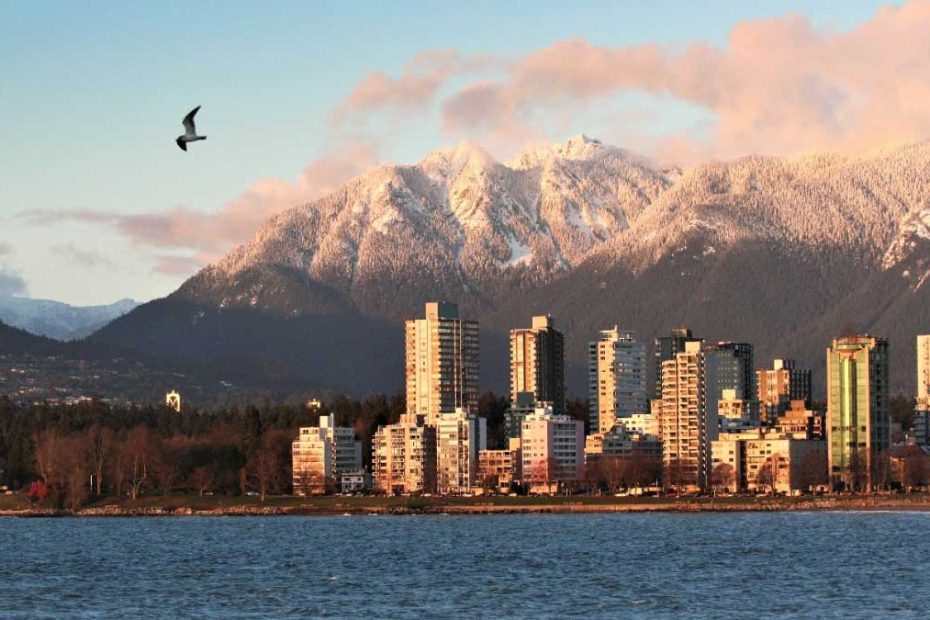Planning a trip to Canada can be both exciting and overwhelming, especially when trying to decide the best time to visit. Each month offers unique experiences, from vibrant spring festivals to breathtaking fall foliage. Whether you’re an adventure seeker, a culture enthusiast, or just looking to relax, knowing what each month has in store can help you make the most of your Canadian adventure.
In this guide, you’ll discover the highlights and hidden gems of traveling through Canada month by month. From the snowy peaks of the Rockies in January to the coastal charm of Nova Scotia in July, we’ve got you covered. Let’s jump into the seasonal wonders that make Canada a year-round destination worth exploring.
Key Takeaways
- Seasonal Highlights: Canada offers unique experiences throughout the year, from snowy adventures in January to coastal charm in July. Each month brings different attractions and weather, catering to diverse travel preferences.
- Optimal Travel Times: Summer (June-August) is ideal for outdoor activities and family vacations, while spring (April-May) and fall (September-October) offer budget-friendly travel with fewer crowds.
- Weather Variations: Canada’s climate varies greatly by region, with milder conditions in British Columbia, colder temperatures in Alberta, and mixed weather in the Maritimes.
- Key Activities and Events: Enjoy winter sports in the Rockies, cherry blossoms and hiking in spring, music festivals in summer, and fall foliage tours. Major events include the Calgary Stampede, Winterlude, and the Montreal Jazz Festival.
- Accommodations and Dining: Canada offers diverse lodging options from luxury hotels to budget hostels. Don’t miss culinary highlights like poutine in Montreal, seafood in Nova Scotia, and maple syrup in Quebec.
- Transportation Tips: Efficient public transport in major cities, car rentals for exploring national parks and rural areas, and various regional considerations like ferry services in the Maritimes and flights to remote territories.
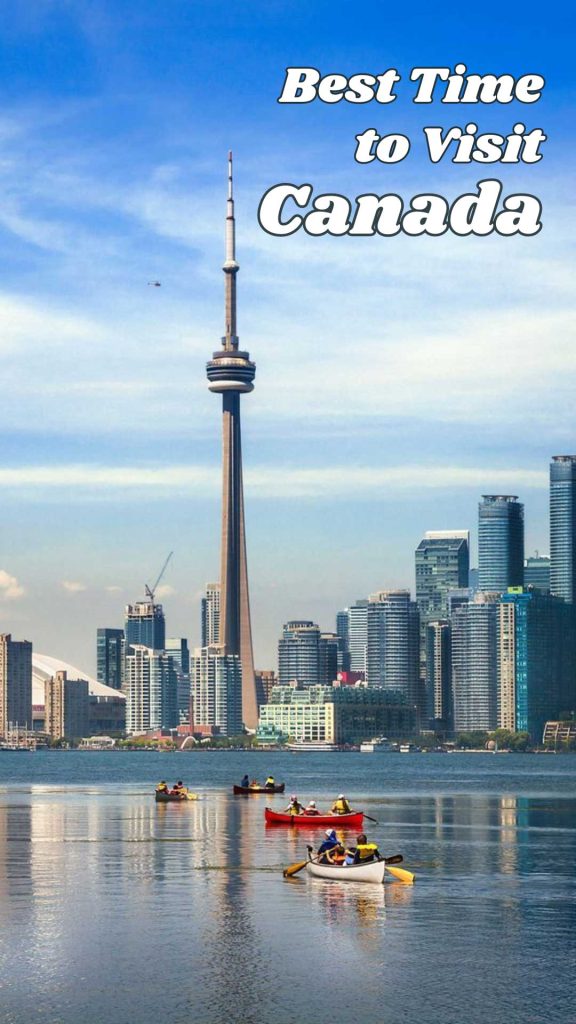
When to Visit Canada
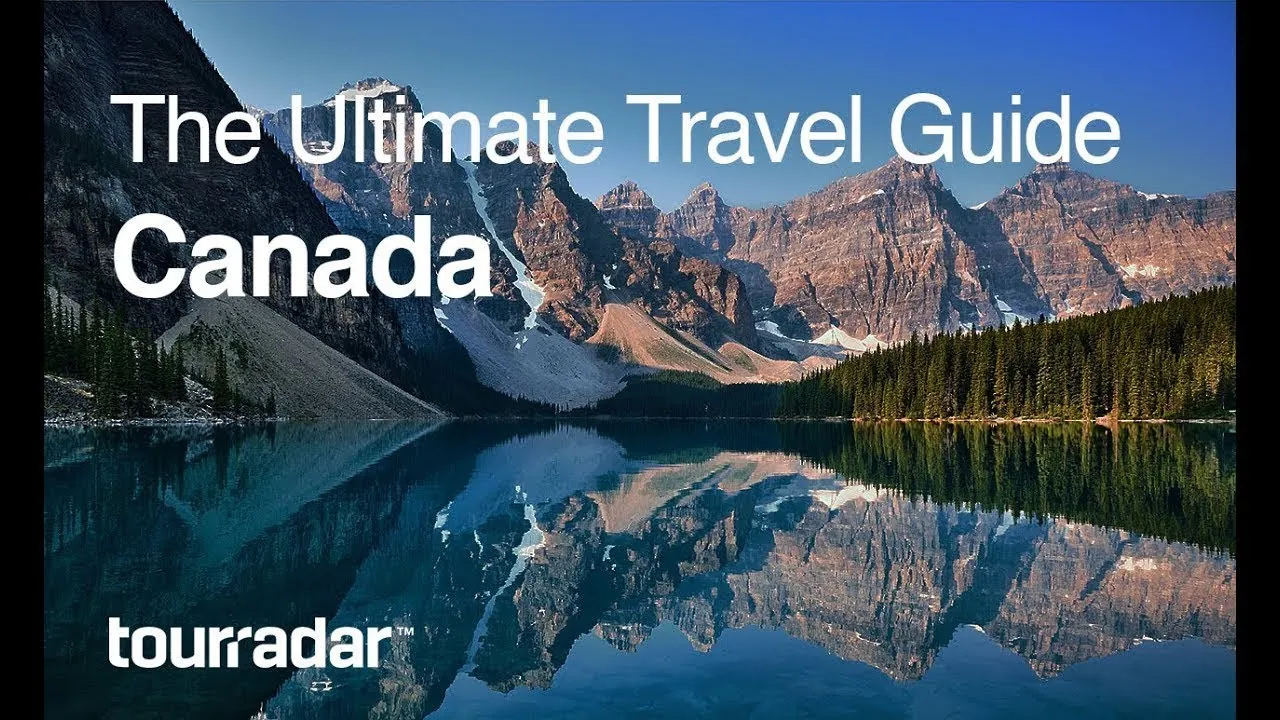
Choosing the best time to visit Canada depends on your preferences for weather, budget, family activities, and crowd levels. Here’s a detailed guide to help you make an well-informed choice.
Best Times for Good Weather
- Summer (June to August): Experience warm temperatures, long days, and peak tourist season. Perfect for outdoor activities like hiking in Banff National Park, camping by the lakes in Ontario, and exploring Vancouver’s coastline. Summer is the busiest, so expect higher prices and larger crowds.
- Fall (September to October): Enjoy mild weather and stunning fall foliage. Ideal for visiting places like Quebec City’s colorful streets and the scenic Laurentian Mountains. Fall offers fewer crowds and slightly lower prices than summer, adding to the charm of the season.
Budget-Friendly Months
- Spring (April to May): Visit during these months for lower accommodation and travel prices. Less crowded than summer, spring provides a more relaxed experience. Witness the awakening of nature with blooming flowers in Butchart Gardens, Victoria, and explore the thawing landscapes of Jasper National Park without the summer rush.
Ideal Time for Families and Kids
- Summer (June to August): School vacations make summer ideal for family trips. Engage in kid-friendly activities like visiting the Toronto Zoo, riding the Banff Gondola, and exploring the Royal Tyrrell Museum in Alberta. The broad range of activities ensures that there’s something for every family member.
- Winter (November to March): Experience fewer tourists, especially in cities like Montreal and Ottawa. While it’s colder, winter offers unique experiences like skiing in Whistler, ice skating on the Rideau Canal, and witnessing the Northern Lights in Yukon. With fewer crowds, enjoy better rates on accommodations and attractions.
| Month | Avg. Temp (°F) | Crowds | Budget-Friendly | Activities |
|---|---|---|---|---|
| April | 40 – 60 | Low | Yes | Cherry blossoms in Vancouver, hiking |
| May | 50 – 70 | Low | Yes | Festivals, parks, gardens |
| June | 60 – 75 | High | No | Hiking, camping, national parks |
| July | 65 – 80 | High | No | Coastal beauty, outdoor adventures |
| August | 65 – 80 | High | No | Festivals, beaches, national parks |
| September | 55 – 70 | Medium | Moderate | Fall foliage, hiking, scenic drives |
| October | 45 – 60 | Medium | Moderate | Fall colors, festivals, reduced crowds |
Deciding when to visit Canada hinges on what aligns with your preferences, from weather and budgets to families and quieter experiences. Consider these factors as you plan the perfect Canadian adventure.
Month-by-Month Guide
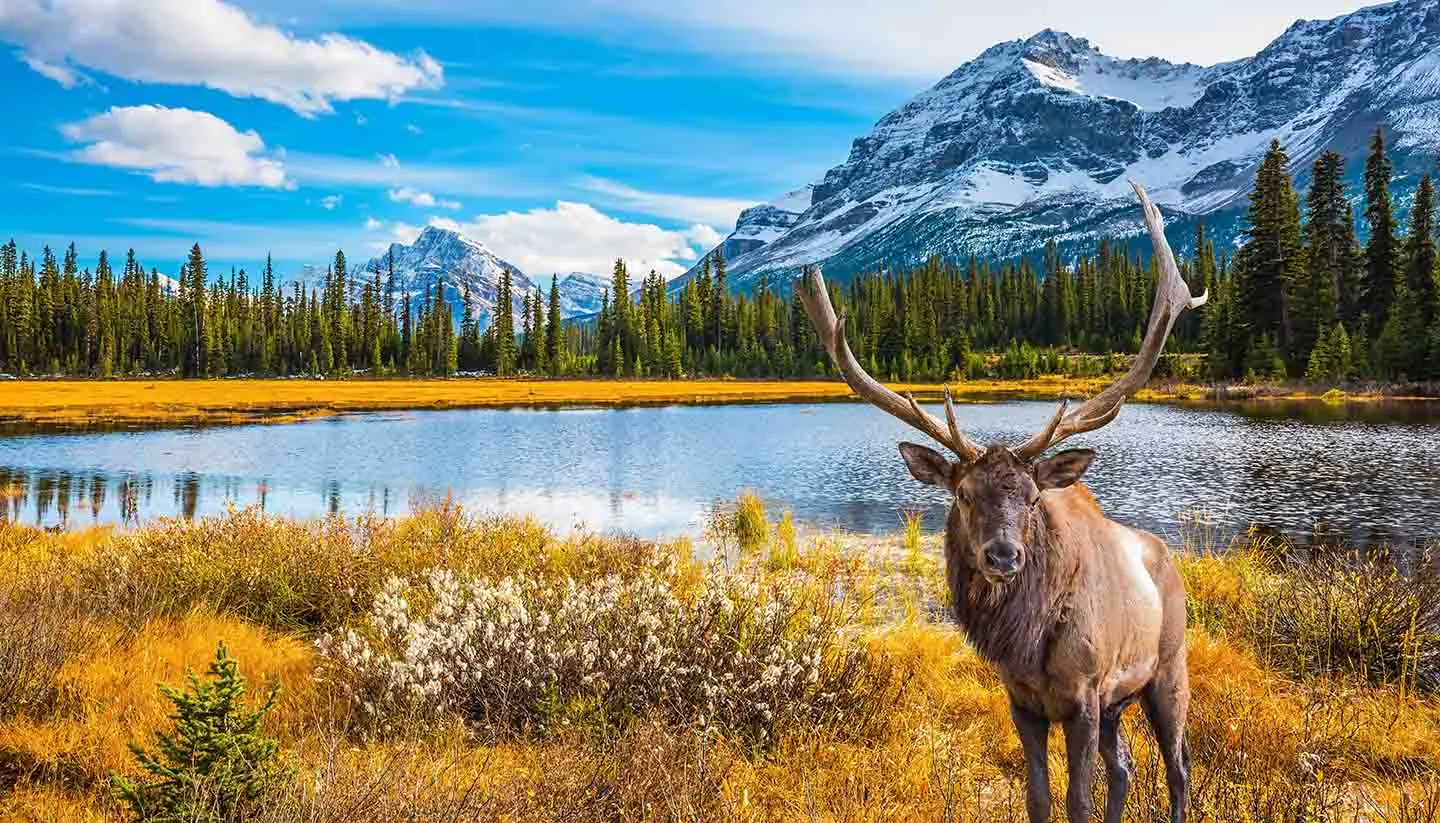
Explore Canada’s diverse landscapes and experiences with our month-by-month guide. Discover the best activities and events each season offers, making your visit unforgettable.
Visiting Canada in January through March
- Weather: Experience Canada’s peak winter, with temperatures often dropping below -4°F (-20°C) in many provinces. Snow blankets much of the country, creating perfect conditions for winter sports enthusiasts.
- Activities:
- Winter sports such as skiing and snowboarding.
- Ice skating and ice hockey on frozen lakes and rinks.
- Adventure activities like dog sledding, snowshoeing, and glacier walks.
- Witness the majestic Northern Lights in northern regions.
- Events:
- Banff Ice Magic Festival and Whistler Pride in January.
- Winterlude in Ottawa, winter carnivals in Québec and Canmore in February.
- Celebrate Family Day weekend in February with various winter sports.

Visiting Canada in April & May
- Weather: As snow melts and temperatures rise, spring breathes life into Canada. Expect mild weather with temperatures ranging from 32°F (0°C) in April to 57°F (14°C) in May.
- Activities:
- Witness cherry blossoms in Vancouver and Ottawa.
- Enjoy hiking trails and blooming landscapes.
- Explore national parks without the summer crowds.
- Events:
- Vancouver Cherry Blossom Festival in April.
- Canadian Tulip Festival in Ottawa in May.
Visiting Canada in June through August
- Weather: Summer brings warm, sunny days ideal for outdoor adventures. Temperatures vary from 64°F (18°C) to 77°F (25°C) across the country.
- Activities:
- Hiking, mountain biking, and camping in national parks.
- Coastal activities like whale watching and kayaking.
- Attend music festivals and cultural events.
- Events:
- Calgary Stampede in July.
- Vancouver International Jazz Festival in June.
- Celebration of Light fireworks in Vancouver in July.
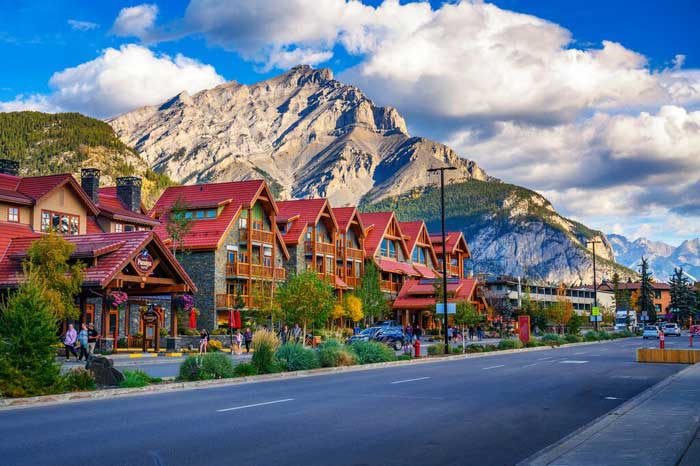
Visiting Canada in September & October
- Weather: Fall offers mild temperatures and stunning foliage, with averages ranging from 66°F (19°C) in September to 50°F (10°C) in October.
- Activities:
- Leaf-peeping in regions like Ontario and Quebec.
- Wine tours in Niagara and Okanagan Valley.
- Hikes through vibrant autumn landscapes.
- Events:
- Toronto International Film Festival in September.
- Oktoberfest celebrations, especially in Kitchener-Waterloo.
- Weather: Early winter starts setting in, with temperatures dropping below freezing. Snow begins to blanket many areas by December.
- Activities:
- Early-season skiing and snowboarding.
- Holiday markets and festive light displays.
- Experience cozy cabin stays with scenic winter views.
- Events:
- Christmas markets in cities like Toronto and Montreal.
- Winter Festival of Lights in Niagara Falls.
Seasonal Activities and Highlights
Canada offers diverse activities and attractions tailored to each season, providing year-round excitement for travelers. Regardless of when you visit, you’ll find unique and unforgettable experiences.
Winter Activities
Winter transforms Canada into a snowy wonderland. Enjoy skiing, snowboarding, ice skating, and ice hockey in top destinations like Whistler, Banff, and Quebec. Catch the Northern Lights in January and February in the northern regions.
- Québec Winter Festival: Lasting 14 nights from late January to February, it features captivating ice and snow sculptures.
- Winterlude: Held in Ottawa, this event includes the world’s largest skate rink and various winter activities.
- Banff Ice Magic Festival: Showcases stunning ice sculptures within Banff National Park.
- Christmas and New Year’s Celebrations: December hosts festive markets and celebrations across the country.
Spring Highlights
Spring breathes new life into Canada with budding flowers and milder temperatures. Ideal for budget-conscious travelers, spring offers fewer crowds and vibrant landscapes.
- Cherry Blossoms: Visit the Vancouver Cherry Blossom Festival in April for beautiful blooms.
- Hiking: Enjoy trails in places like Jasper National Park as the snow melts.
- Tulip Festival: Ottawa’s Canadian Tulip Festival in May showcases over a million tulips.
Summer Adventures
Summer invites you to experience Canada’s great outdoors. Perfect for hiking, boating, and cultural events, it’s the season for vibrant activities and sunny days.
- Outdoor Adventures: Hike in the Rocky Mountains, kayak in the Bay of Fundy, or swim in the Great Lakes.
- Calgary Stampede: This July festival features rodeos, concerts, and parades, embodying Canadian western culture.
- Montreal Jazz Festival: Held in June and July, it attracts jazz enthusiasts from around the world.
Fall Attractions
Fall showcases Canada’s stunning foliage and offers serene retreats. Enjoy the crisp air and rich colors while exploring cultural and natural attractions.
- Foliage Tours: Drive through Algonquin Park or the Cabot Trail to see spectacular fall colors.
- Wine Tours: Visit wineries in regions like the Okanagan Valley and Niagara-on-the-Lake.
- Toronto International Film Festival: Held in September, this event is a prime destination for film buffs.
Accommodations
| Accommodation Type | Locations | Average Nightly Rate (USD) | Best For |
|---|---|---|---|
| Luxury Hotels | Toronto, Vancouver | $250+ | High-end comfort |
| Mid-Range Hotels | Calgary, Montreal | $150-249 | Balanced comfort and cost |
| Budget Hotels | Halifax, Winnipeg | <$100 | Affordability |
| Boutique Inns | Quebec City, Victoria | $100-199 | Personalized experience |
Dining Highlights
Canada’s culinary scene boasts a mix of traditional and contemporary flavors.
- Poutine: Enjoy this classic in Montreal, the dish features fries, cheese curds, and gravy.
- Seafood: Sample fresh lobster and oysters in Nova Scotia.
- Maple Syrup: Visit a sugar shack in Quebec for a seasonal treat.
Transportation & Practical Tips
Canada offers various transportation options, ensuring easy navigation.
- Public Transport: Major cities like Toronto and Vancouver have extensive transit systems.
- Car Rentals: Ideal for exploring rural areas and national parks.
- Biking: Cities like Montreal offer bike-sharing programs.
Carrying layers is advisable due to varying temperatures. A reusable water bottle and bag can minimize waste. Budget travelers will find off-season travel yields lower prices and fewer crowds.
Travel Canada with these tips and experiences, making it a memorable adventure across this vast and varied world.
Weather by Region
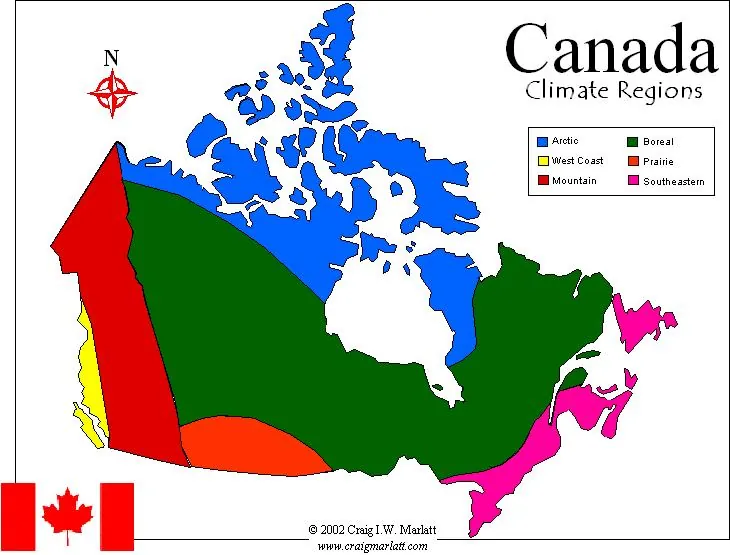
Canada’s weather varies drastically across its regions due to its vast geography. Here’s what you can expect when traveling to different parts of the country.
British Columbia Weather
British Columbia (BC) offers the mildest weather in Canada. Coastal cities like Vancouver experience temperatures ranging from 32°F (0°C) to 45°F (7°C) in January. Summers are warm, with temperatures averaging 70°F (21°C).
- Top Attractions:
- Stanley Park in Vancouver
- Butchart Gardens near Victoria
- Whistler Blackcomb for skiing
- Hidden Gems:
- Othello Tunnels in Hope
- Haida Gwaii archipelago
- Accommodations:
| Accommodation Type | Example | Price Range |
|---|---|---|
| Luxury Hotel | Fairmont Pacific Rim, Vancouver | $400-$800/night |
| Mid-Range Hotel | Coast Coal Harbor, Vancouver | $150-$300/night |
| Budget Hotel | HI Vancouver Downtown Hostel | $30-$60/night |
- Dining Highlights:
- Fresh seafood at Granville Island
- Asian cuisine in Richmond
- Transportation & Practical Tips:
- Public transportation in Vancouver covers buses, SkyTrain, and SeaBus.
- Car rentals available for exploring rural areas.
Alberta Weather
Alberta is colder, with temperatures often below 32°F (0°C) in January. Summers are warm, with average temperatures around 68°F (20°C).
- Top Attractions:
- Banff National Park
- Lake Louise
- Jasper National Park
- Hidden Gems:
- Dinosaur Provincial Park
- Waterton Lakes National Park
- Accommodations:
| Accommodation Type | Example | Price Range |
|---|---|---|
| Luxury Hotel | Fairmont Banff Springs | $500-$1000/night |
| Mid-Range Hotel | Banff Caribou Lodge & Spa | $150-$250/night |
| Budget Hotel | HI Jasper Hostel | $30-$50/night |
- Dining Highlights:
- Alberta beef at local steakhouses
- Fresh farm-to-table options in Calgary
- Transportation & Practical Tips:
- Car rentals essential for exploring national parks.
- Public transportation available in Calgary and Edmonton.
Ontario and Quebec Weather
Ontario and Quebec are very cold in winter, with temperatures as low as -22°F (-30°C) in Quebec. Summers are warm, averaging 77°F (25°C).
- Top Attractions:
- Niagara Falls in Ontario
- Old Quebec City in Quebec
- CN Tower in Toronto
- Hidden Gems:
- Thousand Islands
- Mont-Tremblant
- Accommodations:
| Accommodation Type | Example | Price Range |
|---|---|---|
| Luxury Hotel | The Ritz-Carlton, Toronto | $400-$600/night |
| Mid-Range Hotel | Novotel Montreal | $150-$250/night |
| Budget Hotel | HI Toronto Hostel | $30-$60/night |
- Dining Highlights:
- Poutine in Quebec
- International cuisine in Toronto
- Transportation & Practical Tips:
- Public transport includes subways, buses, and streetcars in major cities.
- VIA Rail connects many cities.
Maritimes Weather (Nova Scotia, Prince Edward Island, New Brunswick, Newfoundland & Labrador)
The Maritimes experience a mix of cold winters and mild summers, averaging 32°F (0°C) in January and 70°F (21°C) in July.
- Top Attractions:
- Cabot Trail in Nova Scotia
- Green Gables in PEI
- Gros Morne National Park in Newfoundland
- Hidden Gems:
- Fundy Footpath
- Fogo Island
- Accommodations:
| Accommodation Type | Example | Price Range |
|---|---|---|
| Luxury Hotel | Fogo Island Inn | $1000-$2000/night |
| Mid-Range Hotel | The Great George, PEI | $150-$300/night |
| Budget Hotel | HI Halifax Hostel | $25-$50/night |
- Dining Highlights:
- Lobster rolls in PEI
- Fresh scallops in Digby
- Transportation & Practical Tips:
- Car rentals are ideal for exploring rural areas.
- Ferry services connect the islands.
Territories Weather (Yukon, Northwest Territory, Nunavut)
The Territories have the harshest winters, with temperatures dropping to -40°F (-40°C). Summers are short yet pleasant, averaging 60°F (15°C).
- Top Attractions:
- Northern Lights in Yellowknife
- Kluane National Park
- Nahanni National Park Reserve
- Hidden Gems:
- Tombstone Territorial Park
- Auyuittuq National Park
- Accommodations:
| Accommodation Type | Example | Price Range |
|---|---|---|
| Luxury Hotel | Arctic Watch Wilderness Lodge | $1000-$1500/night |
| Mid-Range Hotel | Chateau Nova, Yellowknife | $150-$300/night |
| Budget Hotel | HI Whitehorse Hostel | $30-$50/night |
- Dining Highlights:
- Arctic char in Nunavut
- Game meats in Yukon
- Transportation & Practical Tips:
- Limited public transportation; car rentals recommended.
- Flights necessary for remote areas.
Conclusion
Canada’s diverse landscapes and rich cultural experiences make it an ideal destination any time of year. By considering the best months to visit based on your interests and preferences, you can tailor your trip for a truly unforgettable adventure. Whether you’re drawn to the snowy peaks of the Rockies, the vibrant festivals of summer, or the serene beauty of fall foliage, Canada offers something special each month. Plan wisely and embrace the unique charm of every season to make the most of your Canadian journey. Happy travels!
Frequently Asked Questions
When is the best time to visit Canada?
The best time to visit Canada is during the summer months (June to August) when the weather is warm and ideal for outdoor adventures. However, fall (September to October) offers mild weather and stunning foliage, while spring (April to May) is budget-friendly with fewer crowds. Winter (November to March) is perfect for winter sports and offers better accommodation rates.
What can I do in Canada during winter?
In winter (November to March), you can enjoy activities like skiing, snowboarding, and ice skating in popular destinations such as Whistler and Banff. You can also witness the Northern Lights and participate in events like the Banff Ice Magic Festival.
Are there any major events in Canada during summer?
Yes, the summer months (June to August) feature major events like the Calgary Stampede and the Montreal Jazz Festival. It’s also a perfect time for hiking, exploring national parks, and enjoying water activities.
What is the weather like in Canada during fall?
Fall (September to October) in Canada is characterized by mild temperatures and stunning fall foliage. It’s a great time for wine tours and events like the Toronto International Film Festival.
Why should I consider visiting Canada in spring?
Spring (April to May) offers budget-friendly travel with fewer crowds and blooming landscapes. Notable events include the Vancouver Cherry Blossom Festival and the Tulip Festival in Ottawa.
What are the top activities to do in Canada during summer?
During summer, you can enjoy hiking, camping, and exploring national parks. The weather is ideal for cultural events, water activities, and outdoor adventures across the country.
How does the weather vary by region in Canada?
Weather in Canada varies greatly by region. British Columbia has mild weather, Alberta has colder climates, Ontario and Quebec have defined seasons, the Maritimes experience cold winters and mild summers, and the Territories have harsh winters and short summers.
What are some hidden gems to explore in Canada?
Some hidden gems include Canada’s national parks, the Cabot Trail in the Maritimes, and local festivals. Each region offers unique attractions like Stanley Park in British Columbia and wine country tours in Ontario.
Which months have fewer tourists in Canada?
Spring (April to May) and early winter (November) typically have fewer tourists. During these times, you can enjoy a more budget-friendly trip with lower accommodation rates and fewer crowds at popular attractions.
What are the accommodation options in Canada?
Canada offers a variety of accommodation options ranging from luxury hotels to budget-friendly stays like hostels and bed-and-breakfasts. Options vary by region and can suit different budgets and preferences.
How can I get around in Canada?
You can use public transport in major cities, rent cars for rural exploration, or bike in urban areas. Major cities have robust transit systems, while car rentals are ideal for exploring national parks and rural destinations.

